The International Living Future Institute administers the Living Building Challenge® (LBC) certification program which is organised into seven performance areas, known as Petals. One of these, the Materials Petal, advocates for a materials economy that is non-toxic, ecologically restorative, and transparent. Central to the Materials Petal are the LBC Red List and the Declare® transparency label. The Red List identifies the ‘worst in class’ chemicals commonly found in building materials, and lead* is among the banned Red List items due to its severe health impacts.
[*Lead is allowed if the ‘lead-free’ definition of “not more than a weighted average of 0.25 percent lead when used with respect to the wetted surfaces of pipes, pipe fittings, plumbing fittings, and fixture” is met – per LBC Temporary Exception RL-011 Lead.]
The Agency for Toxic Substances and Disease Registry, states the environmental levels of lead have increased more than 1000-fold over the last three centuries, due almost exclusively to human activities. According to The Agency, lead, a toxic heavy metal, poses significant threats to health, including damage to virtually every organ and system in the human body, particularly the brain and central nervous system. Even low levels of lead exposure are associated with decreased IQ and delayed learning in children, with effects being irreversible. Yet despite these risks, regulations in Oceania currently allow up to 4.5% lead content in plumbing materials, far in excess of international standards.
Thankfully, changes are underway to align lead limits in Australia and New Zealand with international standards. Australia’s National Construction Code NCC 2022, mandatory from May 1, 2026, limits lead content to 0.25%, while New Zealand’s MBIE (Ministry of Business, Innovation & Employment) has set a similar limit effective from September 1, 2025. These changes will impact any plumbing product that contains copper alloys intended for use in contact with potable water for human consumption, some of these include fittings, hoses, valves, taps, filtration equipment, dispensers, water heaters and water meters.
Some examples of products that the changes would not apply to include, showers for bathing, firefighting water services and equipment, emergency showers, washing machines, dishwashers, commercial boilers associated with eating, and ventilation and air conditioning systems.
To ensure compliance, products must be verified by an accredited test facility (such as IANZ or equivalent accreditation in accordance with NSF/ANSI/CAN 372), and Australia has mandated the display of a Lead-Free WaterMark mark of Conformity. In New Zealand, while specific lead-free labelling is not legislated, manufacturers must state how their products comply with the Building Code Clause. The Master Plumbers Association in Australia supports these changes, and the Master Plumbers Associations in New Zealand is going even further by advocating to MBIE for:
- Introduction of mandatory independent third party verification for plumbing products, with compliance to be enforced at the point of sale
- Easy consumer identification of lead free products, similar to the Australian WaterMark mark of Conformity model
- Plumbing equipment beyond the toby (stopcock) to be required to be lead free
By announcing these decisions now, the aim is to provide certainty and direction to the sector and give manufacturers and suppliers time to implement the required change to the affected plumbing products.
It’s crucial to raise awareness about the high levels of lead still allowed in Oceania and to support the upcoming changes. There are many ways you can make a difference:
- Raise awareness in your networks about the high levels of lead currently allowed in this region
- Contact your local council, the master plumbers association and tapware and pipework manufacturers/ retailers today to let them know why you are concerned about lead levels in drinking water and demand that fixtures meet ‘lead free’ limits (max. 0.25% lead)
- Spread the word about the changes that are coming
- Contact Ross Wakefield at MBIE [email protected] to support the advocacy on lead in plumbing products of the Master Plumbers Association in New Zealand
- Encourage manufacturers & suppliers to urgently develop/introduce ‘lead free’ products
- Specify and support lead-free products are already available e.g.
– https://www.rehau.com/au-en/lead-free-rautitan
– https://www.rba.com.au/rba-news-commercial-bathroom/lead-free-and-certified-why-wait/
– https://elson.net.au/products/ - Help get pipework and tap-ware onto the Declare® database in Australia and New Zealand so that specifiers can see the lead content in the products and make informed choices. Provide these webpage links:
– Declare basics https://living-future.org/declare/basics/#what-is-declare
– Declare information Australia https://living-future.org.au/declare/
– Declare email contacts: [email protected] (NZ) / [email protected] (AU) - LBC Project teams in Oceania are encouraged to avoid using the LBC Temporary Exception RL-014 Lead Regulation Limitations, which permit the use of products complying with current local lead limits, unless absolutely necessary. Instead, thoroughly research and specify products that are already ‘lead-free’
Let’s work together to eliminate this harmful toxin from our building materials and protect our health and environment for generations to come.


